Are you passionate about making a difference in our environment? Writing a letter to propose changes in environmental policies can be a powerful way to express your ideas and inspire action. In this article, we'll explore effective strategies for crafting a compelling letter that resonates with decision-makers and engages the community. Join us as we delve into the essential components of a persuasive environmental proposalâlet's create a brighter, greener future together!
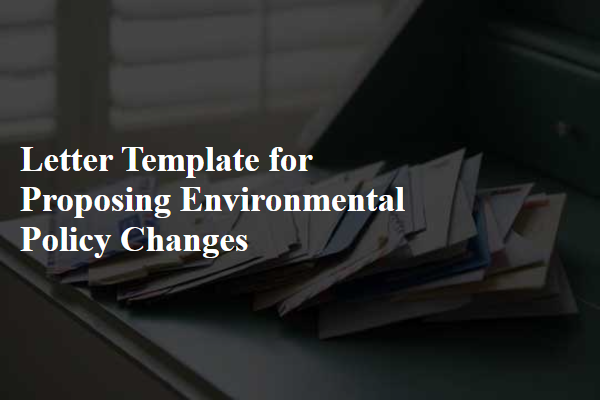
Introduction and Context
Soaring global temperatures have reached alarming levels, with an increase of approximately 1.2 degrees Celsius since the late 19th century, prompting urgent calls for comprehensive environmental policy changes. Climate change, caused by greenhouse gas emissions from fossil fuels, poses significant threats to ecosystems, human health, and economic stability across diverse regions, including vulnerable areas like the Arctic and low-lying coastal cities such as Miami. The frequency of extreme weather events, such as hurricanes, wildfires, and flooding, has surged, impacting communities and infrastructure. Initiatives like the Paris Agreement, adopted by 196 countries in 2015, emphasize the need for collaborative efforts to limit global warming and transition to sustainable practices. Institutions and governments must prioritize innovative strategies, including renewable energy sources, carbon pricing mechanisms, and conservation programs, to effectively address these pressing environmental challenges.
Objectives of the Proposal
This proposal aims to implement comprehensive environmental policy changes to promote sustainable practices across multiple sectors. The key objectives include increasing renewable energy sources like solar (target of 30% adoption by 2030), improving air quality standards (reducing particulate matter by 50% in urban areas), enhancing waste management systems (aiming for a 70% recycling rate), and protecting biodiversity (establishing five new conservation areas by 2025). Each objective seeks to address ongoing environmental challenges while fostering community engagement and economic growth through green job creation and educational initiatives.
Supporting Data and Evidence
Environmental policy changes require substantial supporting data and evidence to ensure effectiveness and sustainability. Reports from the Intergovernmental Panel on Climate Change (IPCC) indicate that global temperatures could rise by 1.5 degrees Celsius as early as 2030 if carbon emissions continue to increase at current rates. Scientific studies demonstrate that industrial pollution contributes to approximately 7 million premature deaths annually, primarily in urban areas such as New Delhi and Beijing, due to poor air quality. Additionally, data from the World Wildlife Fund (WWF) highlights that habitat destruction leads to the extinction of nearly 1 million species within decades, threatening biodiversity and ecosystem stability. Economic assessments show that investing in renewable energy sources, like solar and wind power, could create 24 million jobs globally by 2030, proving beneficial for both the environment and economy. These statistics underscore the urgent need for policy reforms in environmental regulations to combat climate change and protect public health.
Proposed Policy Changes
Proposed policy changes on environmental sustainability aim to address pressing issues in climate change mitigation, waste management, and resource conservation. In 2022, global carbon dioxide emissions reached approximately 36 billion metric tons, emphasizing the urgent need for reduced fossil fuel reliance and increased investment in renewable energy sources like solar and wind power. Local initiatives, such as the implementation of comprehensive recycling programs in cities like San Francisco, can enhance waste reduction efforts, achieving a diversion rate of over 80% from landfills. Furthermore, adopting policies for urban green spaces and biodiversity conservation in major metropolitan areas, such as New York City, would promote ecological health and improve air quality, benefiting public health and overall quality of life. Engaging communities through educational programs on sustainable practices can foster a culture of environmental stewardship, crucial for the success of these proposed changes.
Call to Action and Contact Information
The implementation of sustainable environmental policy changes, such as reducing carbon emissions by 50% by 2030, is crucial for combating climate change. For instance, transitioning to renewable energy sources like solar and wind can significantly lower greenhouse gas emissions. Local governments, such as those in California, have begun initiatives that emphasize environmental resilience and sustainability, setting examples for others. Community involvement can amplify impacts, providing platforms for citizens to voice their concerns and advocate for policy enhancements. To facilitate these changes, collaboration among stakeholders, including nonprofit organizations, businesses, and citizens, is essential to foster a hopeful and actionable agenda for a greener future.
Letter Template For Proposing Environmental Policy Changes Samples
Letter template of Environmental Policy Proposal for Government Agencies
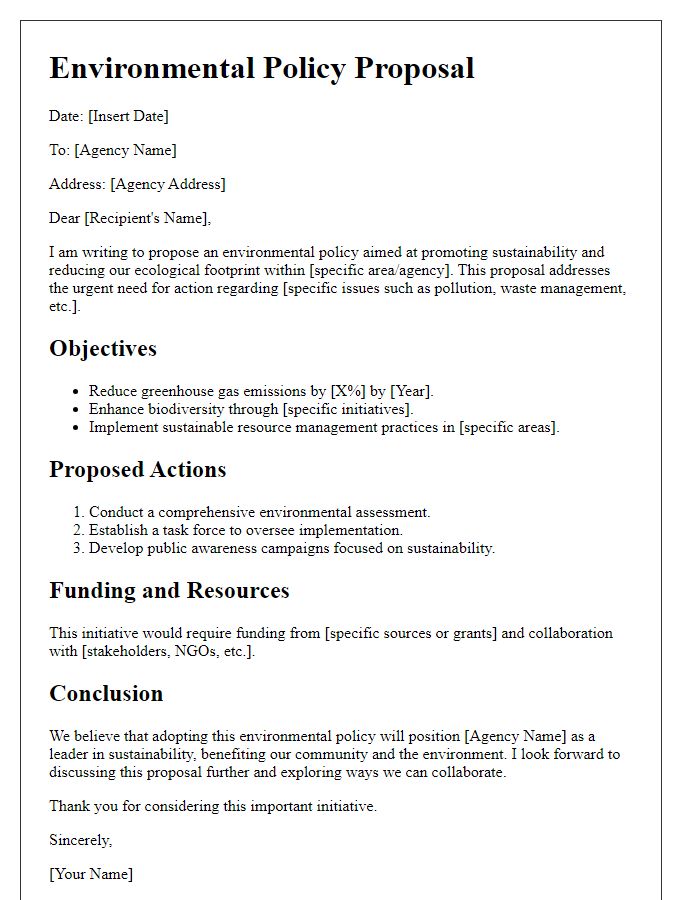
Letter template of Eco-Friendly Legislation Advocacy for Community Groups

Letter template of Environmental Reform Ideas for Educational Institutions
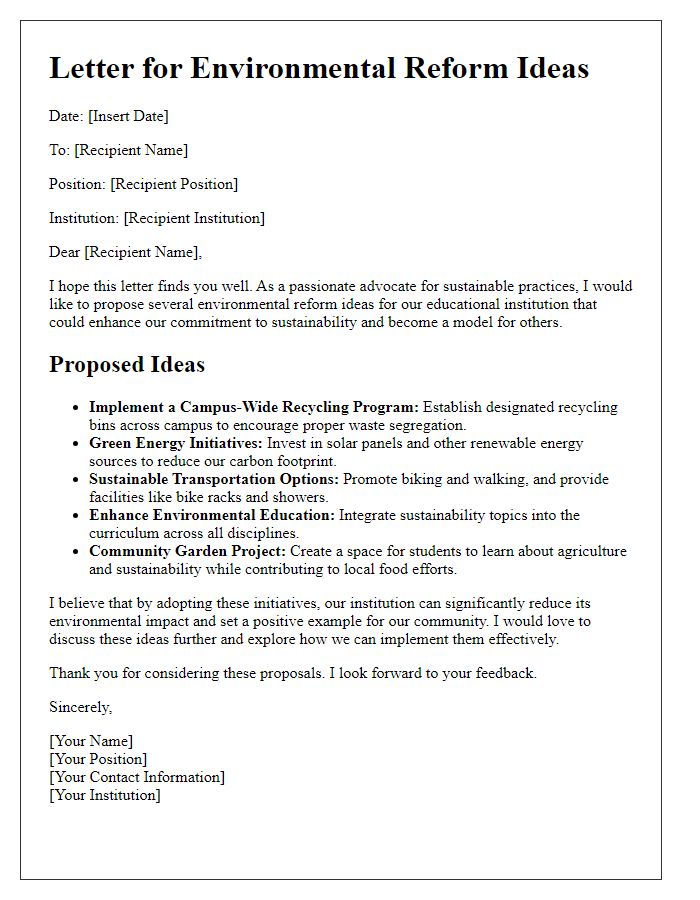
Letter template of Biodiversity Protection Recommendations for Environmental Organizations


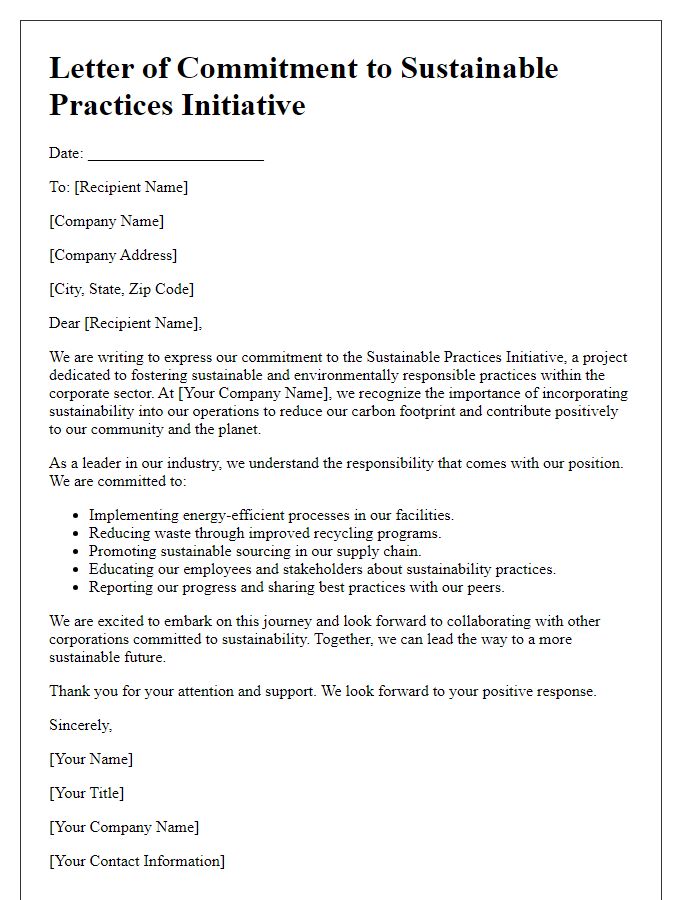
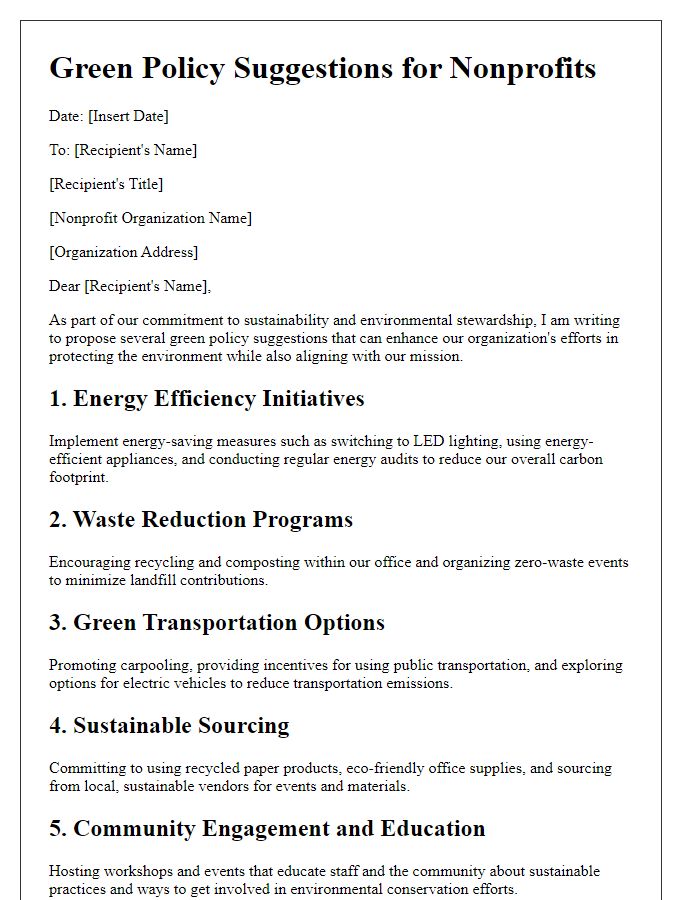
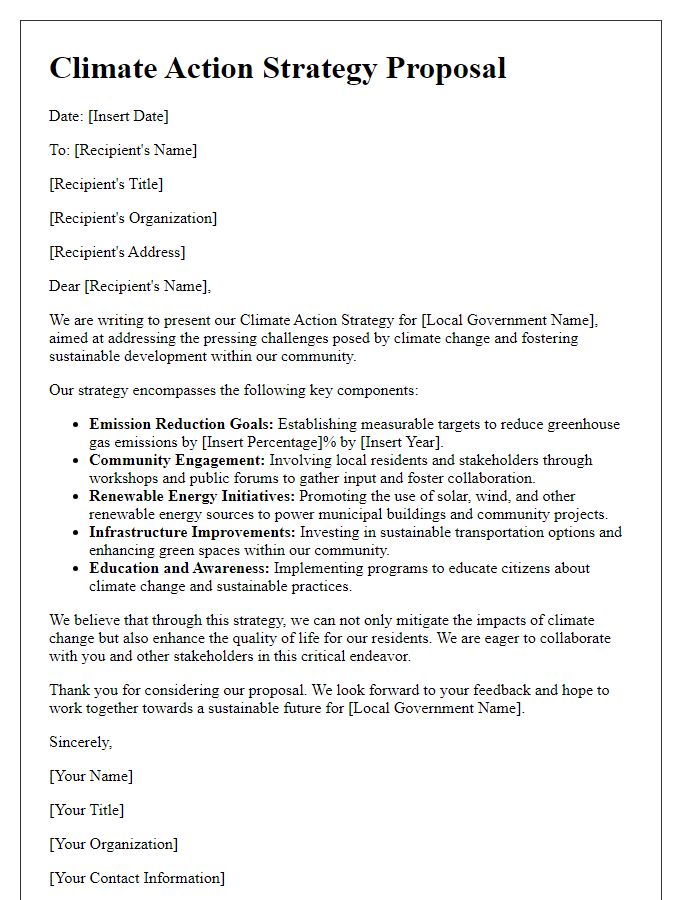
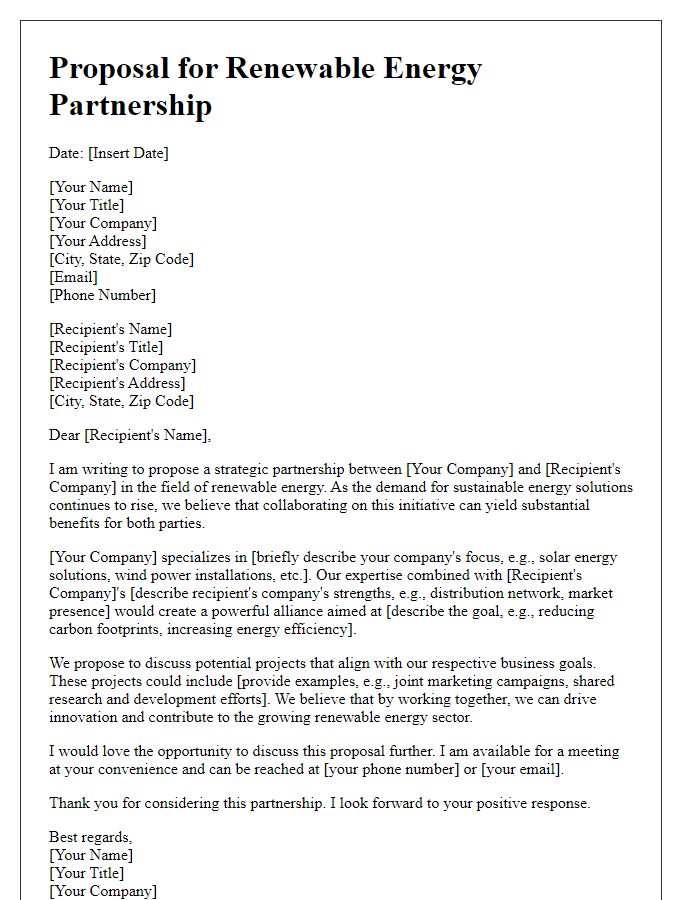
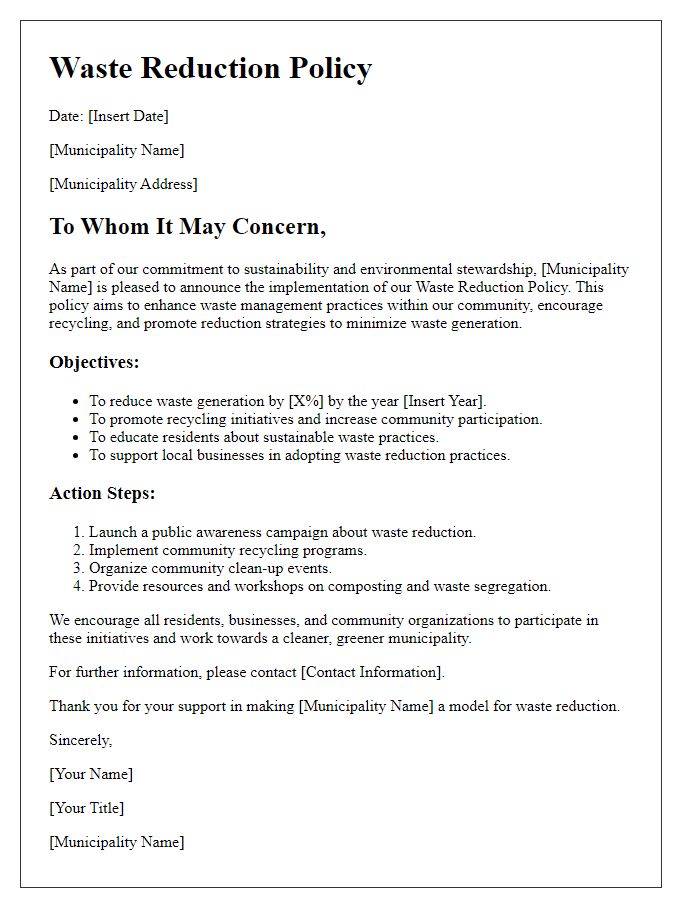
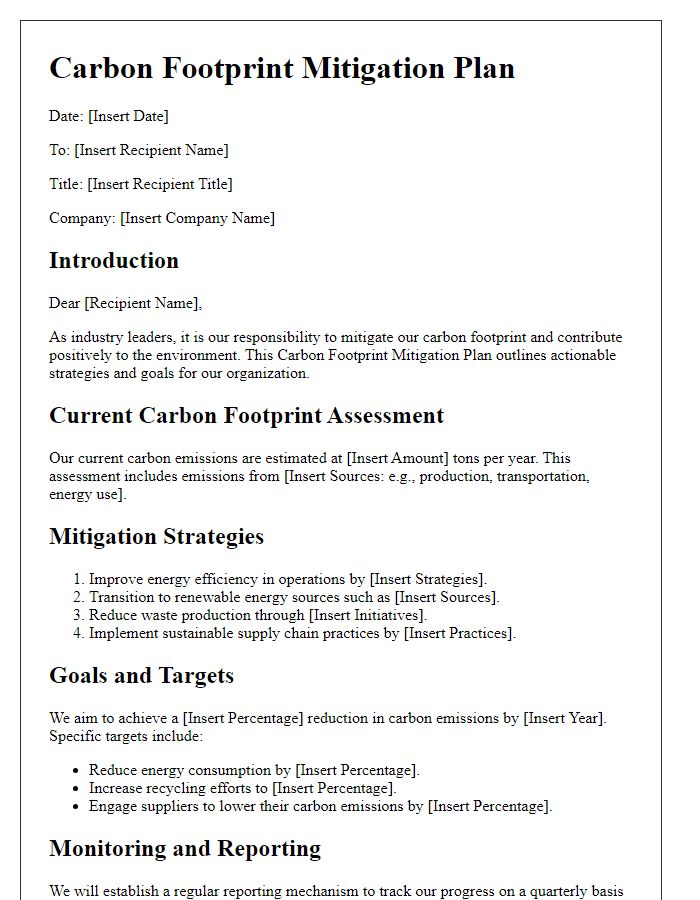


Comments